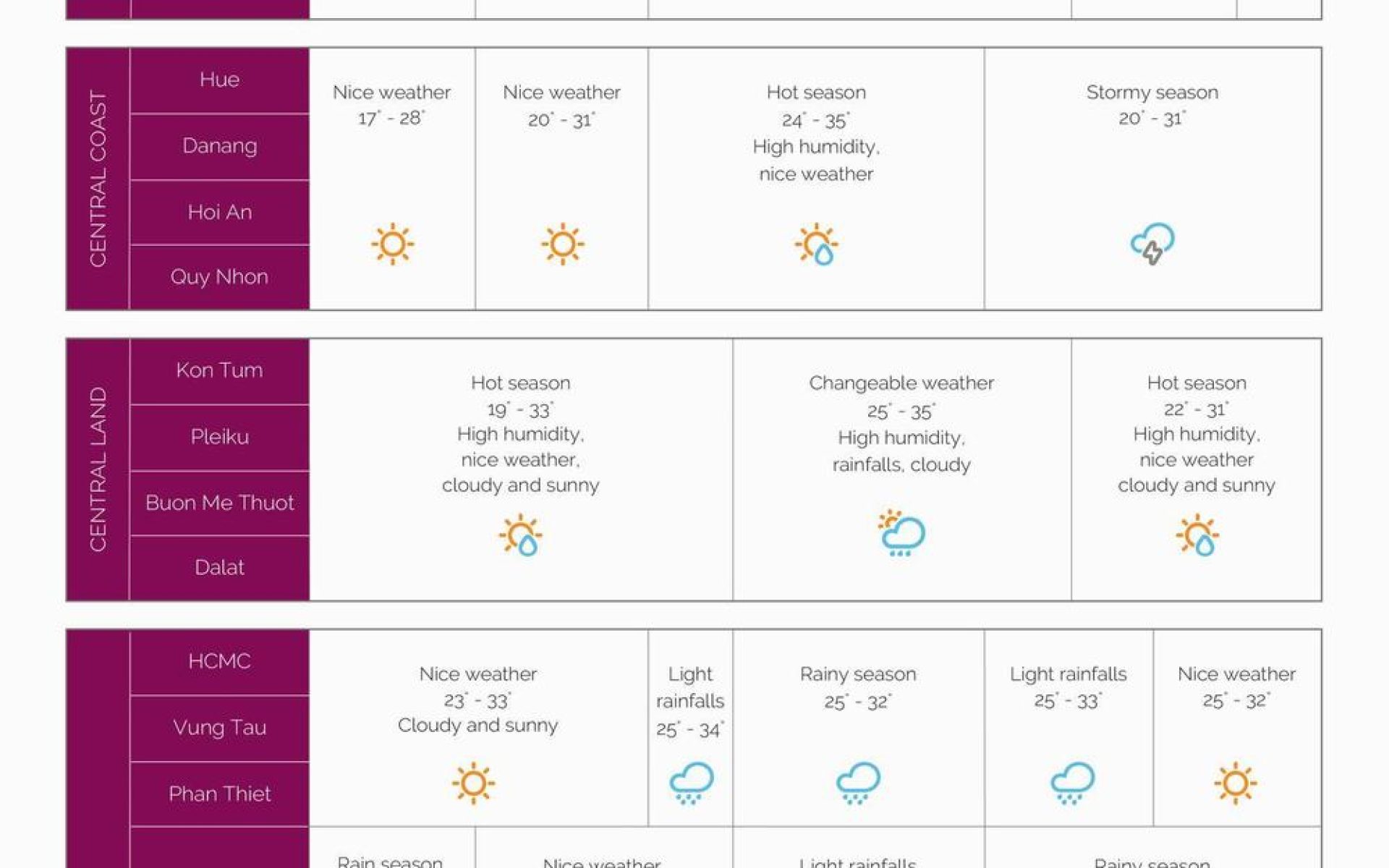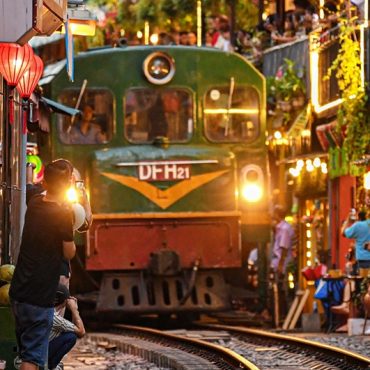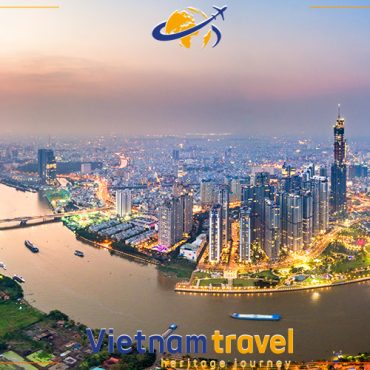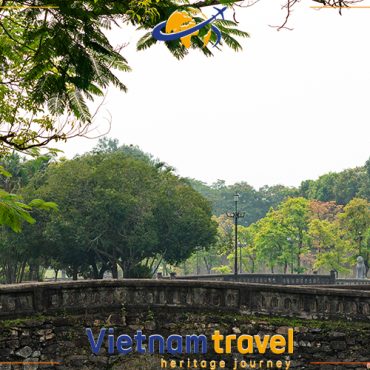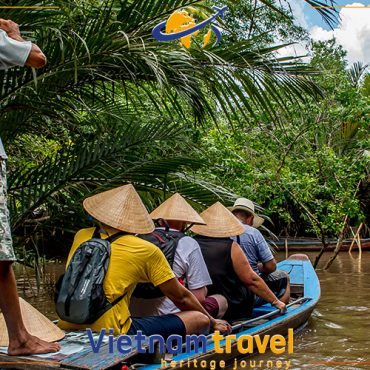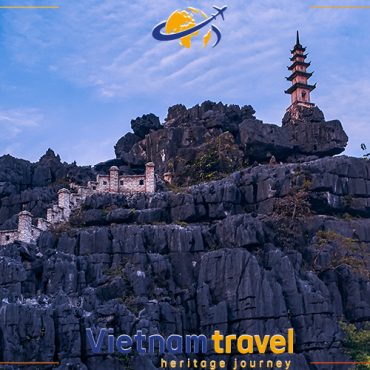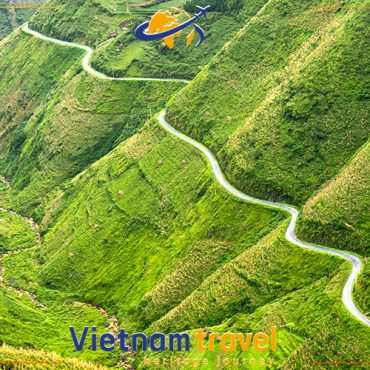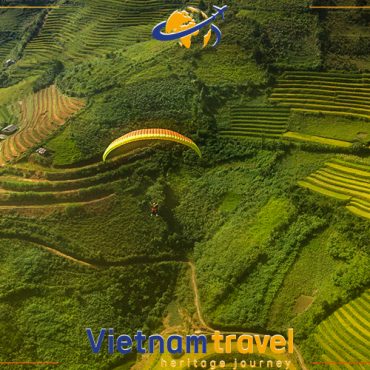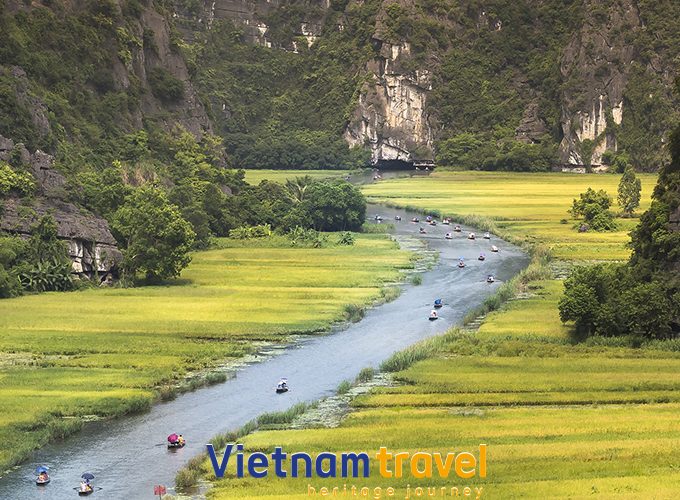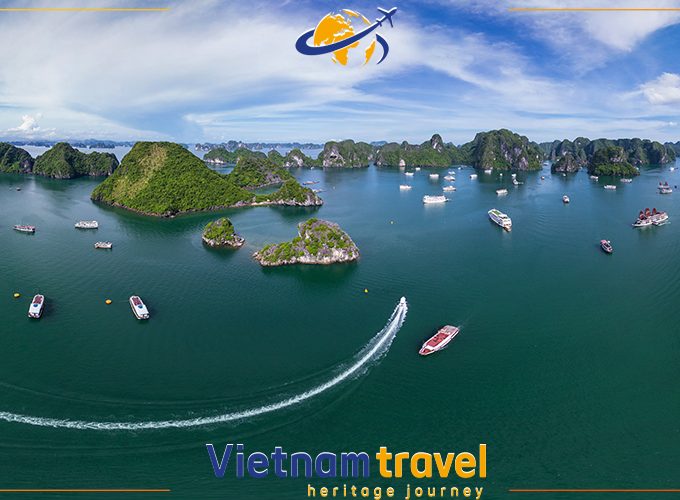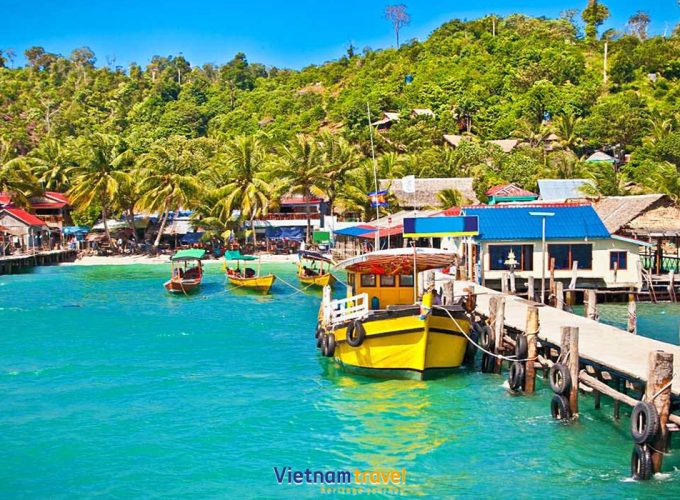-
- Visa Exemption
Vietnam visa exemption (visa waiver or visa-free policy) is Government’s policy when a foreigner can enter and stay in Vietnam for a certain period without applying for a visa and paying related visa fees. Regarding Resolution No. 32/NQ-CP issued on 15 March 2022, there are a total of 25 countries that are exempted from the Vietnam visa with the conditions below:
Conditions
-
- Effective from 15 August 2023, regular passport holders from 13 countries of Belarus, Denmark, Finland, France, Germany, Italy, Japan, Norway, Russia, South Korea, Spain, Sweden, and the U.K are exempt from visas for Vietnam for 45 days instead of 15 days.
- According to Vietnam’s immigration law, a traveler’s passport must have at least six months of validity to be eligible for a visa exemption following the date of arrival in Vietnam.
- This visa exemption can be applied for at all official international border checkpoints.
- Travelers wishing to enter Vietnam using this visa exemption must show their return air ticket.
- British National Overseas (BNO) passport holders are not eligible for the Vietnam visa exemption. So, they need to apply for a visa to visit Vietnam.
- APEC Business Travel Card (ABTC) holders with valid passports are exempt from Vietnam visa requirements for a stay of no longer than 60 days.
- The visa-free stay period is counted from the date of entry.
Procedure
Traveler’s entry into Vietnam: go to the immigration booth to complete the immigration procedure with passport and return ticket ready. Airport customs police will stamp passports twice: 1 stamp at the entry point and the second stamp for the time that visitors are allowed to stay (day of entry plus 45 days)
-
- Electronic Visa (E-visa)
The Vietnamese government has made e-visas available to citizens from 199 countries, including the United Kingdom and the United States. The application can be processed through this website
The E-Visa is an electronic travel authorization from the Vietnam Government for up to 90 consecutive days, issued in PDF format. It is the equivalent of a visa, but no stamp or label is placed on the passport. Visitors with e-Visas can touch down at any of Vietnam’s 13 international airports, 16 land border gates, and 13 sea border gates.
Applicability
-
- Travelers who do not belong to the list of visa-exempt countries like Switzerland, Ireland, etc.
- Travelers who are from visa-exempt countries but wish to apply for a multiple-entry visa or need to travel to Vietnam for more than 45 days.
Remarks
-
- Travelers who can apply for an e-Visa but already have the immigration department dispatched can choose between continuing with the regular visa procedure or converting to the e-Visa. However, it is advised that travelers should consider changing to the e-Visa application to reduce the visa fee. This conversion would take a little longer as the submission process has to start over again.
- The traveler must present a printed copy of the e-Visa (with Vietnamese national and Q.R. codes) and a passport upon entry to Vietnam.
- The visitor should re-check the permitted residence time on the stamp (with the “E.V.” sign) at the Immigration Booth in case the officer forgot to stamp the time into the visa exemption.
- The visitor should also re-check all personal information on E-visa to ensure all is correct in case the Immigration Office can refuse entry.
The visa fees are published as follows:
-
- Single-entry: 25 USD
- Multiple entries: 50 USD
Important notes:
-
- Visa fees for foreign children under 14 years old shall not be different; the entry fee is 25 USD (25/2021/TT-BTC – 07/04/2021).
- If the children are on the same passport as the father/mother, they are not required to pay the stamping fee. However, if they have their own passport, they must pay the stamping fee to get their Vietnam visa.
-
- For citizens who must apply for visa/visa on arrival
Apply for a Tourist Visa From your home country
The standard visa is a tourist visa, valid for a 1-month stay. You can apply for a tourist visa at the Vietnamese embassy in your country. Be aware that your passport must be valid for six months beyond the last day of your stay in Vietnam and that you must have one blank page left for the visa stamp.
With our assistance, directly from a Vietnamese embassy
Vietnam Heritage Travel can obtain a visa authorization for you that the Immigration Ministry in Hanoi will process. To have such permission, you must send us the details of your passport (name, surname, date of birth, passport number, nationality, profession, issuing and expiring date of the passport)
Vietnam Heritage Travel will send the authorization to the Vietnamese embassy of your country, and when ready, you will be able to collect it before your departure to Vietnam. The cost of such a service is 15 USD per person. However, you must still pay the visa fee when you collect it at the embassy. The time needed for the entire process is around 15 days.
With our assistance, obtain a visa on arrival at one of the international airports in Danang, Hanoi, or Saigon.
Vietnam Heritage Travel can take care of the visa procedure upon arrival at the following airports: Hanoi, Danang, and Ho Chi Minh City. Just follow the procedure described below.
Procedure for visa on arrival:
Requirements:
-
- Ensure each passport has two blank pages for the necessary visa stamp.
- Validity of passport: In Vietnam, a passport must be valid one month after departure from Vietnam; for other Asian countries, the passport must be good at least six months after the planned departure date from Asia.
- The traveler’s passport number must appear on all documents: the Excel file and visa forms.
Step 1. Request for Visa authorization:
Take note of the information on the travelers’ passports: full name, date of birth, nationality, passport number, date of issue, etc. This information must reach us at the following address at least 21 days before the date of the traveler’s departure
The Ministry of Public Security in Vietnam for a visa application requires this information. The time limit to obtain a visa is 24 hours for an urgent procedure with an added surcharge applied or five working days for regular tourist visas.
If you do not use a computer, kindly mail us a copy of your passport with a legible passport number.
It is essential to indicate the specific airport in Vietnam where travelers will get their visa, including airline, time, date, and arrival flight number.
Our authorized staff in the Hanoi office will send you the visa permit by fax and email.
Step 2. Fill in the NA1 forms of visa request:
At the same time, each traveler must fill in one (1) form NA1, a visa request, on which they must attach a recent identity photo (less than six months old). Photocopies of photographs are not accepted.
Attention: Using the same passport number on the Excel file and the visa request form is vital. You must keep this form which will be requested at the time of checking-in at airports and on arrival in Vietnam.
Do not send the NA1 form to the embassy of Vietnam in your country; keep this document with you.
To download the Visa form for Vietnam, please Click Here
Step 3. Regularization of passports:
When you check in at the departure airport, you must show a copy of the authorization, the NA1 form (completed with a photo attached), and your passport.
Warning: if you do not have the authorization letter to show the airline check-in staff, you will not be permitted to board the plane.
When you arrive in Vietnam, you must present yourself and the NA1 form to the visa upon arrival desk before proceeding to the immigration desk.
At this point in the process, you have several possible choices:
-
- You prepare everything by yourself, including the visa payment. In VND or preferably in USD. Paying in Euros is possible but not encouraged.
- You can ask for help from our staff (pre-arranged): our team will wait for you at the airport within the immigration area with a board showing your name and will take care of the whole process with the immigration service. Your passport will be stamped when going through immigration. You won’t have anything to pay at the airport. After, you can collect your luggage at the luggage belt before proceeding through customs.
Visa VIP B: The same service as above, but the process is much faster, as you won’t queue and take a private way to the luggage belt where you can collect your luggage. Time: about 5-10 minutes (versus 60 minutes)
Visa VIP A: In this case, you won’t have anything to do and will go directly to your hotel room. Our staff will take care of the visa process, collect your luggage (you must give us information about it), and bring it to you. This service is only available at Noi Bai International Airport in Hanoi.
President VIP Visa: Our staff will wait for the traveler directly outside the plane with a car to go to the hotel. Our team will take care of the visa process and will collect the luggage to bring them to the hotel. This service is only available at Noi Bai International Airport in Hanoi.
Note: For children under 12 in Vietnam:
If a child is present on their parent’s passport, the child won’t have any fee, but it is still necessary to give all the information about them to apply for visa authorization.
Special cases:
Multiple Entry Visa:
If the traveler has to exit Vietnam and re-enter the country several times during their stay, they will have to apply for a multiple-entry visa.
When a multiple-visa is granted, the traveler can enter Vietnam as often, without limitation, as the number of entries or the length of stay for each entry within the granted visa allows.
-
- Transit Visa
Following Law No. 47/2014/QH13 on entry, exit, transit, and residence status of foreigners in Vietnam, which takes effect on January 1st, 2015, transit through Vietnam is dictated as follows:
-
- Foreigners that travel by air are required to obtain the Official Transit Dispatch from Vietnam Immigration Department.
- The maximum length of stay is 72 hours.
- Requirements for entry and exit and one international airport gate. Does not apply to land border gates.
- The visitor must travel to a third country, which cannot be the country of arrival (for example, from Bangkok to Hanoi to Singapore – the visitor cannot travel back to the country they started in, like Bangkok to Hanoi to Phuket).
-
- URGENT VISA
Suppose you do not have any authorization or visa before arriving in the country. In that case, Easia Travel can handle the situation upon your arrival at the airport. Some fees will be charged over and above the usual prices for this service.
For citizens of “sensitive” nationalities: For example, Iran; Iraq; Sri Lanka; Kenya; Turkey; Bangladesh; Jordan; Pakistan; Syria; Togo; Saudi Arabia; Samoa; Nigeria; Lebanon; Yemen; Ecuador, Turkish, and Bangladesh:
The same procedure as “regular” nationalities apply. Still, instead of providing only the information on the participant’s passports, such as full name, date of birth, nationality, passport number, date of issue, etc., the travelers must also have the documentation outlined below to obtain the Visa authorization:
-
- A scan of the passport
- Confirmation of hotels booked during the entire stay
- Proof of international and domestic airline tickets for the whole the trip
- The tour program
- A guaranteed document by the travel agency
Vietnam Heritage Travel can provide the last four papers.
The fee for the service will be higher (about 80 USD in addition to the standard price). The visa authorization time is also longer (about ten working days).
LAND BOARD CHECKPOINTS
A Visa for Vietnam can be obtained during your visit to some border posts. You will find the list of land border checkpoints below. However, we strongly advise all travelers to take care of Visa formalities in advance:
| China – Vietnam |
|
| Hekhou – Lao Cai (Yunnan to Lao Cai Province) |
No visa on arrival |
| Friendship pass (Guangxi to Lang Son Province) |
Visa on arrival |
| Laos – Vietnam |
|
| Panghok – Tay Trang (Phongsaly Province to Dien Bien) |
Visa on arrival |
| Namsoi – Na Meo (Huaphanh to Thanh Hoa Province) |
Visa on arrival |
| Namkan – Nam Can (Xieng Khoang to Nghe An Province) |
Visa on arrival |
| Nampao – Keo Nua (or Cau Treo) (Bolikhamxay to Ha Tinh Province) |
Visa on arrival |
| Napao – Chalo (Khammouane to Quang Binh Province) |
Visa on arrival |
| Dansavanh – Lao Bao (Savannakhet to Quang Tri Province) |
Visa on arrival |
| Attepeu – Bo Y (Attapeu to Kon Tum Province) |
No visa on arrival |
| Cambodia – Vietnam |
|
| O’Yadaw – Le Thanh (Rattanakiri to Gia Lai Province) |
No Visa on arrival |
| Trapeang Srer – Hoa Lu (Kratie to Binh Phuoc Province) |
No visa on arrival |
| Trapeang Phlong – Xa Mat (Kompong Cham to Tay Ninh Province) |
No visa on arrival |
| Bavet – Moc Bai (Svay Rieng to Tay Ninh Province) |
Visa on arrival |
| Khaam Samnor – Vinh Xuong (Kandal/PNH to Chau Doc) |
Visa on arrival |
| Phnom Den – Tinh Bien (Takeo to An Giang Province) |
Visa on arrival |
| Preah Chak – Xa Xia (Kampot/Kep to Ha Tien) |
No visa on arrival |
Phu Quoc Island Visa Regulation
According to overseas entry, exit, and residence regulations for Phu Quoc Island, foreign visitors, and Vietnamese nationals holding foreign passports are permitted to stay on the island without a visa for not more than 30 days. Foreigners who come to Vietnam via an international air border, stay at the transit area at the gate, and then travel on to Phu Quoc Island are also exempt from visa requirements by this regulation.
The above information is provided to the best knowledge of Easia Travel specialists and will be updated regularly.








